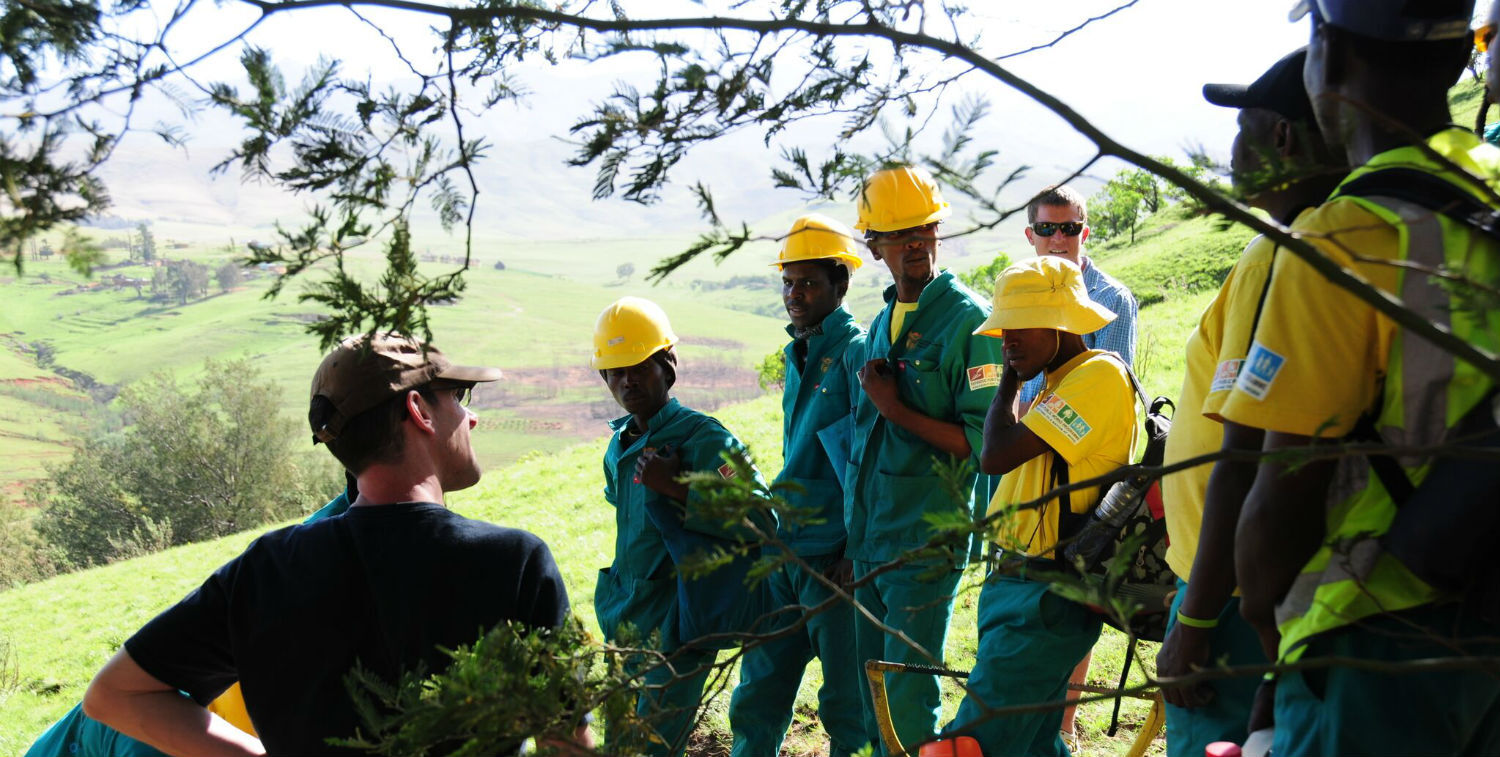
REFLECTING ON INVESTMENT: GREEN JOBS IN SOUTH AFRICA
In celebration of EU Green Week, we look back at CEPF's investment in the Maputaland-Pondoland-Albany Biodiversity Hotspot and how it helped promote green jobs.
30 May 2017
In 2010, CEPF began its investment in the Maputaland-Pondoland-Albany, a biodiversity hotspot located in southern Mozambique, eastern Swaziland, and two provinces in South Africa, KwaZulu-Natal and the Eastern Cape.
The timing aligned with a South African government-subsidized green jobs initiative, and CEPF developed its strategy for the region with this in mind.
“From the writing of the ecosystem profile, there was a lot of emphasis on how the CEPF investment would unlock green jobs so that all South Africans could benefit from our country’s rich biodiversity in a way that would ensure these resources were conserved and sustainably used,” said Roelie Kloppers who managed the CEPF regional implementation team (RIT), housed at Wildlands Conservation Trust.
Working for Water
A large-scale government program already in place at the start of CEPF’s investment, “Working for Water” employed local people in removing alien plants in key catchments to ensure water flow to rivers. Over time, however, the government-funded work became politicized and the areas targeted for investment were determined less by environmental need and more by places with the highest rates of unemployment.
Working with the South African National Biodiversity Institute and the Department of Environmental Affairs, CEPF enabled an analysis of the program and a re-direction of priority zones for investment that ensured the areas targeted addressed both poverty needs and genuine biodiversity concerns.
Through these efforts, CEPF also contributed to an innovative new program, the Natural Resource Management Land Users Incentive. Through this initiative, the national government provides funding for green job wages, while private land owners, companies and nonprofit organizations provide the overhead funds.
Youth Environmental Services Project
In 2003, the South African government began the Youth Environmental Services Project to assist young adults in obtaining green jobs. Every year, 100 people are recruited in each South African province. Participants complete a dedicated learning process and work for one year in their own communities on various green jobs, such as recycling, reforestation and food gardening.
When the project was announced, CEPF’s RIT partnered with other organizations to implement the program in KwaZulu-Natal and Eastern Cape. They were awarded 30 million rand (approximately US$2.3 million) over three years and, through this, created 600 new green jobs for young people who also received certification in education in natural resource management. Many of these participants have since gone on to work for local municipalities and nonprofit organizations. “Through this we provided green jobs and supported CEPF grantees in various Key Biodiversity Areas where they were working,” said Kloppers. “The CEPF grantees were ideal housing units for these green jobs and could absorb them to further their work.”
Green Fund
Through the national government’s Green Fund, which promotes the green economy, Wildlands Conservation Trust was awarded 22 million rand (approximately US$1.7 million) to take community conservation projects that were supported by CEPF at that stage, to community conservation businesses that could generate green jobs and returns for the communities.
One of the key projects was Somkhanda Game Reserve, where CEPF worked with Wildlife ACT and African Conservation Trust. “We took that from a fledging reserve to a “Big Five” tourism destination that will hopefully create hundreds of sustainable green jobs for the communities in years to come,” Kloppers said.
Looking Back
Reflecting on CEPF’s investment in the hotspot, which closed in 2016, Kloppers believes that the green jobs would have been created even without CEPF. However, according to Kloppers “the sustainability of the jobs created would have been much less had it not been for the key role of CEPF in guiding where the jobs were created, and with whom.”